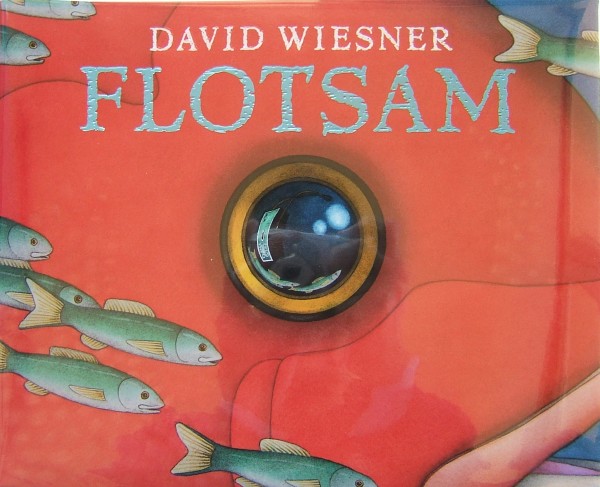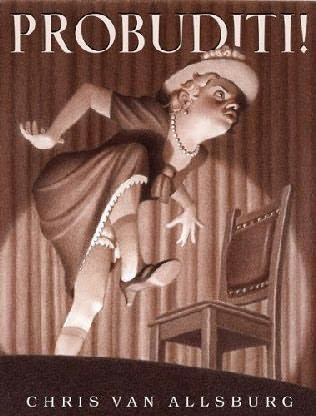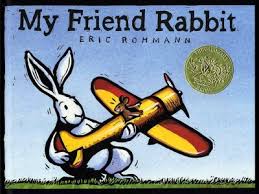The Lorax-Dr. Seuss
Type: Children’s book- cartoon drawings with bold color fills Intended for children ages 6-10
Rating: 5 Stars
The Lorax is a story about a man named the Once-ler, who came upon a whole forest of beautiful Truffula trees. He learned about all the fun things he could make and sell from chopping down the Truffula trees and proceeded to chop down all of the Truffula trees he could find, thereby destroying the entire forest.
I really liked the story of The Lorax; I thought that it had a lot of good messages within it concerning consumerism and the production of goods. It really is a perfect story about consumerism and how humans are destroying many of their own natural resources in order to produce building materials, and pretty things to wear. It also put an image with the idea that consumerism does take away natural resources in the way the Truffula forest is shown in the beginning of the book, after all of the Truffula tress have been chopped down; and in the middle of the book when the Once-ler is telling the story of when he himself stumbled upon the Truffula forest.
This story could be really useful in a classroom setting. Although it is found on some controversial book lists, I do not really think that this would be a controversial book to use in a classroom. The destruction of resources, such as rainforests, has been a really big issue now for a long time. I think this book could fit in perfectly with a lesson having to do with the destruction on natural resources. It is a Dr. Seuss book, which I think will lure kids into reading it willingly, but the content of the book, will give teachers a chance to dive into some critical literacy ideas concerning the topic and overall theme of the story. Unlike some other children’s books, this story does have a clear setting, theme or moral, and clear characters.
Black and White- David Macaulay
Type: Picture book, watercolor illustrations Intended for children ages 6-10
Rating: 5 Stars
Black and White is a picture book that has four different concurrent stories going on at the same time. There are four boxes within the two pages, and each story has something to do with all the other ones as you read along.
This book had a really interesting concept throughout it- on each page there were two different boxes with a picture and narration, so there were four boxes found throughout each set of two pages. Each of these boxes appeared to have a different story going on at first, but as you go along through the story, you realize that the four stories begin to become more and more interconnected. I thought that this was a really good twist to traditional storytelling. Each story cell had a specific setting pertaining to its story. They were all different settings, but then as the stories begin to reveal their relevance to each other, you realize just how these settings that appear to be random actually connect to each other in logical ways. I also thought it was interesting how there was really no indication as to what story box you should be reading first, second, third, or fourth. If you go by normal book reading technique, you should be reading left to right, top to bottom. But since there were only two cells on each page should you read them top to bottom and then move on to the next page and read top to bottom?
I think this would be a very good book to use in the classroom. There are many elements of this book that challenge our conventions of reading, even more so for young children who are just beginning to read or becoming more confident readers. I think it would be a really good exercise to let each child read the story in the way that they see fit- left to right, top to bottom, etc, and then later see just how each of the students read the book and hear what their resulting conclusions were. This is a book that lets you decide how you want to read it. You can view it as four individual stories going on at once, or you can see it as four individual stories that eventually become interconnected in their events and characters. Either way, each student is going to have their own thoughts and experience from reading the book, and I think a really interesting classroom experience can be taken from it.
Flotsam- David Weisner
Type: Wordless picture book- watercolors Intended for children ages 4-10
Rating: 5 Stars
Flotsam is the story of a young boy who is sitting on the beach one day and comes upon an underwater camera that has washed ashore. Inside it he finds film and gets it developed.
I really thought that this was a very clever children’s book. Even though it is a wordless picture book, there is still a story that you can follow along with, as well as a theme, setting, and characters. The illustrations of this book are amazing to look at. Because there are no words in the book, the illustrations have to be extra detailed and precise to assure that the audience is going to be able to follow along with what is happening in the story. Every page has a picture that I could spend ten minutes looking at; and within that time, I really do not think that I would have even begun to see all of the different details that David Weisner has included. It is this attention to detail that makes this book truly great and deserving of the Caldecott Medal.
I would be very enthusiastic about using this book in my classroom. There are so many different types of activities that you could come up with using this type of book. Because there are no words throughout the entirety of the book, students will be able to interpret it in a variety of ways. It could spark a very good class discussion about what students think is going on within each different page. I also think that it would be interesting to use this book in a writing activity and have each student write out what they think is going on throughout the entire book, and then go back and look through all of the different ideas that students can interpret from the pictures. Even though there is a very strong plot like throughout the story, because it is a wordless book there is going to be some room for interpretation, which is what I think makes this book so great.
Snowflake Bentley- Jacqueline Briggs Martin, Illustrated by Mary Azarian
Picture book- etchings
Intended for children 7-11 Rating: 5 Stars
Snowflake Bentley is the story of Wilson Bentley and how he came to love the beauty of snowflakes. His parents bought him a microscope camera when he was young and he spent the rest of his life photographing snowflakes and nature and writing about them.
This book was really interesting in the way that it is part biographical fiction and part biographical nonfiction. I liked how there were really two parts to the story- the primary narration that tells the story of Snowflake Bentley and how he came to love studying snowflakes , but then there are also side panels that appear every few pages that tell the historical biographical information on Wilson Bentley, the story’s main character. I really liked that feature because it gives the reader more information on the main character of the story; it lets you get to know his life on a deeper level. I also particularly liked how the illustrator of the story used sort of the same method that Snowflake Bentley used when he would hike his snowflake pictures- etching. It gives the book itself a deeper connection to its main character through its exhibition of the same technique.
This would be a really good book to use in the classroom if you were doing a lesson on snowflakes or a lesson on biographies. I think using this book as a model would work really well to show students that biographies can take shape in many different forms. I remember when I was in elementary school, I had to do a biography on a famous person that I liked, and I remember it being incredibly boring to write a paper retelling the facts that I had learned out of another book. Giving kids the opportunity to turn a biography into something creative like this would be a really good project. I, personally would have been much more enthusiastic about writing a biography if I would have been able to put my own little fictitious twist to it.
Jumanji- Chris Van Allsburg
Picture book- realism black and white
Intended for children ages 7-11 Rating: 5 Stars
Jumanji is the story of siblings who come across a mysterious board game one day and decide to play. When they start playing, the game creates jungle situations that come to life- a stampede, quicksand, bats flying around etc. Soon, the children realize that they have to finish the game or deal with the new reality they have created.
Beginning Jumanji, I remembered that I had already read Chris Van Allsburg’s other adventure game book, Zathura. I really enjoyed reading Zathura, and the same held for Jumanji. The fantastical situations presented, I feel, are fun for any age. The illustrations of the book really put you in the moment and help you imagine what it must have been like for the kids to, say, outrun a stampede of Elephants. I enjoyed the fantastical nature of the story as well; it’s just fun to imagine what you would do being put in that kind of situations. I still don’t know what I would do.
I think this book could be used in a classroom really well for a group reading book or an SSR book. I feel it is the type of book that a teacher could read out loud and keep her class interested the whole time because of its adventure aspect and action sequences. This book would also be really good to use in a fiction unit; if you were working towards having students crate their own fiction pieces for publishing, this would be a really good book to use for those students who are more inclined towards an adventure type story. This book is so incredibly over the top that I think it’s a good one to show students and let them know that they sky is the limit when it comes to what you can write about.
Ella Enchanted- Gail Carson Levine
Type: Children’s novel Intended for children ages 9-13
Ella Enchanted is the story of a girl named Ella who has had a terrible cure put on her since she was a baby- the curse to obey whatever she is told. This curse has dominated her life for as long as she can remember; but when the prince and Ella fall in love, she has to try to break the curse, before it’s too late.
I remember reading this novel as part of a circle read in the fourth grade. However, in the fourth grade I did not enjoy it whatsoever because of the lack of enthusiasm my teacher had in regards to reading it to the class. After re- reading it, if you will, I realized just how wonderful this book really is. There is a level of humor in the tone of the narrative that keeps the reader interested and wanting more. There is action, adventure, and a love story to keep the readers entertained; there really is something for everyone in this novel. The author is able to describe the settings in such detail that you feel as though you are with these characters and they embark on their adventures; there is also a very nice moral or theme to the story, which I believe is to think for yourself and not be influenced by the words of others. Because throughout the whole story, poor Ella has to obey the commands of what anyone tells her, but by the end she breaks the curse by sticking up for what she believes in and creating her own path.
I think this book would work really well within the classroom as a silent sustained read or as a round circle read. This is a novel that I think students would have motivation to read on their own, for a book report, etc. There is the element of magic within this book, but I do not think it is on any level that parents would have a problem with the class being exposed to the book. Mainly there are just mythical fairy tale creatures within the novel and it is not on an y controversial book list that I am aware of. So, overall I think it is a really good boo to use with reluctant readers because it has all different kinds of story elements in it- adventure, romance, magic, as well as a good moral and theme that the students can take from reading it.













